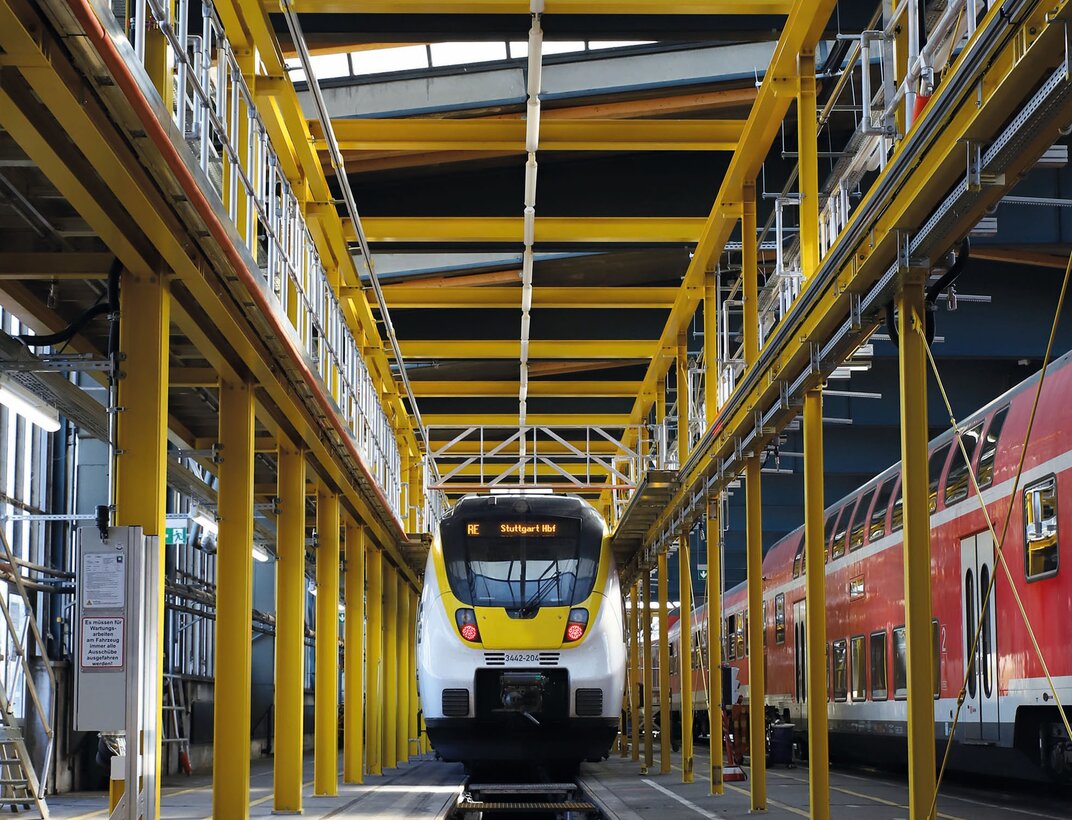DB Regio AG specifically chose Munk Günzburger Steigtechnik as its project partner for the maintenance project, because the specialist for individual solutions developed a customised overall concept and planned the complete system with a wide variety of facets. "Stuttgart has once again shown: good project planning is already half the access technology solution. As an innovation and technology leader, it is a matter of course for us to offer solutions from a single source. Our customers appreciate our planning and consulting expertise, on-site support throughout the entire project and, of course, our comprehensive after-sales service," says Ferdinand Munk, owner and managing director of the Munk Group.
Thus, in addition to developing and customising the roof work stand for DB Regio AG, the Bavarian quality manufacturer also integrated the complete steel structure and two crane systems from Abus into the project. One crane can be moved freely over the roof work stand from Munk Günzburger Steigtechnik and can be used to transport parts, components and tools with a load of up to 500 kilos. The 3.2-tonne crane system is located in front of the maintenance tracks.
This means that the DB Regio AG technicians are able to cope with all maintenance jobs, while maintaining the highest level of safety. They have safe access to the working platforms via two stairways, and there is also an emergency ladder in the middle of the structure. To minimise the risk of falling, Munk Günzburger Steigtechnik has implemented a sophisticated railing concept - a combination of rigid and flexible railings that can be individually adapted to the respective maintenance conditions as well as train types. The aluminium platform covering with a slip resistance of the R11 rating group, the monitoring system with indicator lamps and the contour adaptation to different types of train with zero gap dimension are also supporting pillars in the work safety concept.
The necessary flexibility is provided by platforms on both sides of the roof work stand, which can be mechanically varied in width by 350 mm each and thus adapted exactly to the contours of locomotives, railcars and wagons. "The roof work stand can be docked to the outer skin with millimetre precision, completely independent of the shape of the vehicles. The gap dimension is thus close to zero, which ensures maximum working safety. Tools can also no longer fall down," explains Munk.













